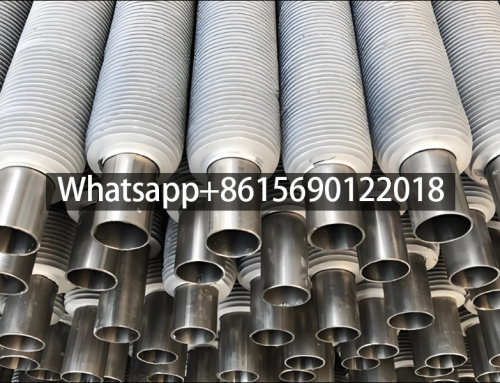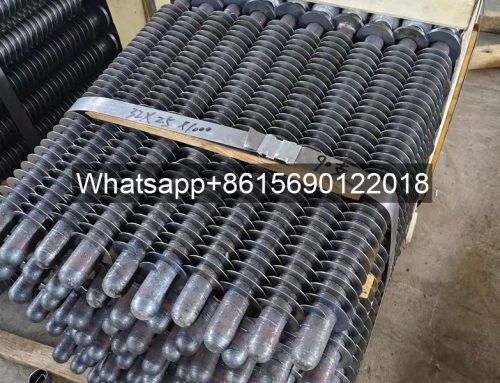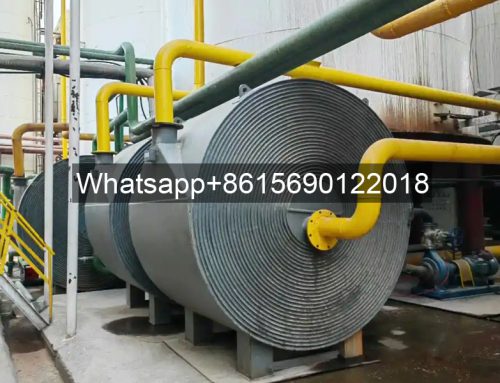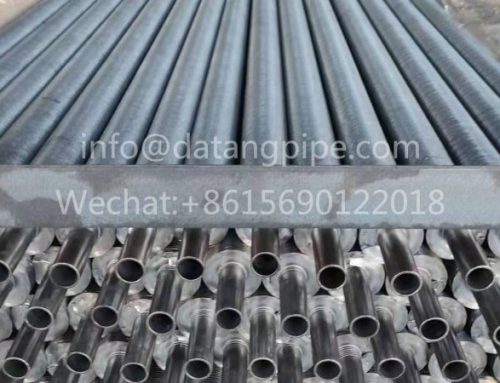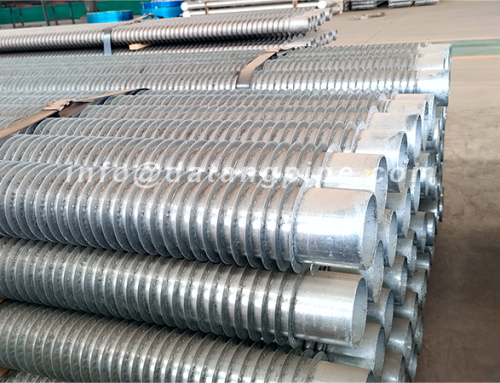What are Longitudinal Finned Tubes?
Longitudinal finned tubes are heat transfer enhancement elements with fins arranged along the tube’s axial direction. They increase heat transfer efficiency by increasing surface area and are widely used in industrial waste heat recovery, air heaters, and drying equipment.
For a given tube or tube size, the desired heat transfer surface area per unit length of the tube can be achieved by specifying the appropriate fin height and number of fins. The number of fins in a longitudinally finned tube depends on the tube’s outer diameter—larger OD tubes can accommodate more fins.

U-Shaped Longitudinal Finned Tube Manufacturing Process
Longitudinal finned tubes are produced by resistance welding fins along the tube’s length. The fins are first formed into a U-shaped channel, with each leg of the U forming a fin. The channel is cut to the appropriate length, then oriented and resistance welded into place along the tube’s length. The channels are welded in pairs, diametrically opposed, so the specified number of fins must be a multiple of four.
For a given tube or tube size, the desired heat transfer surface area per unit length of the tube can be achieved by specifying the appropriate fin height and number of fins. The number of fins depends on the outer diameter of the tube—larger OD tubes can accommodate more fins.
Longitudinal finned tubes, like welded spiral finned tubes, can be used in virtually any heat transfer application.
The choice between longitudinal finned tubes and spiral finned tubes appears to be primarily based on geometric factors. For example, some heater configurations consist of finned tubes inserted within other tubes—longitudinal finned tubes are the obvious choice for such applications.
In other cases, users prefer longitudinal finned tube installations, where the tubes are oriented vertically—the fin orientation facilitates fluid drainage along one side of the finned tube.
Longitudinal fin configurations are commonly used in shell and tube applications, such as double-tube and multi-tube heat exchangers, where longitudinal finned tubes are telescoped within the bore of a larger shell and tube. Heat is transferred between the fluid flowing through the finned tube bore and the fluid flowing through the shell bore. The fluid flowing through the shell bore is forced to flow between the longitudinal fins. In this case, the spiral fins impede fluid flow rather than allowing it to flow between the fins.
Longitudinal Finned Tube Packing

Advantages of Longitudinal Finned Tubes
① Improved heat transfer efficiency within the available space.
② Reduces the installation space required for heat transfer surfaces
③ Reduces equipment costs while providing higher operational reliability.
④ Reduces tube-side pressure drop, reducing operating costs.
⑤ Increases steel pipe rigidity and improves seismic performance.
⑥ Enhances heat transfer, reducing flow resistance and metal consumption


